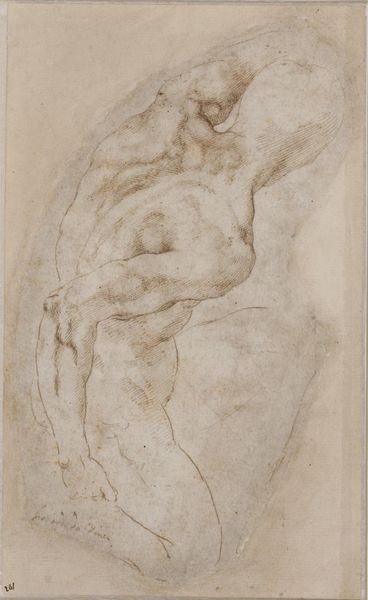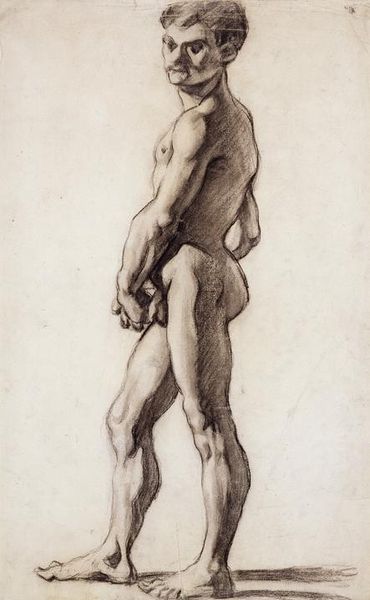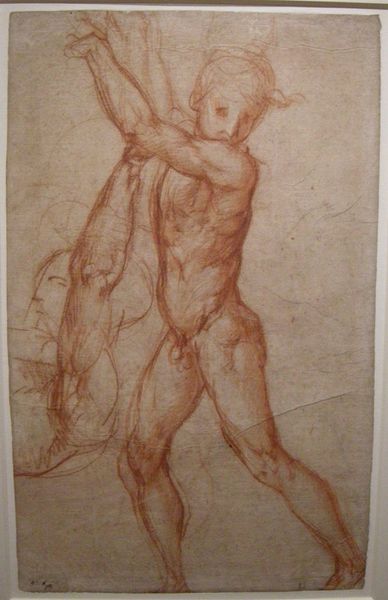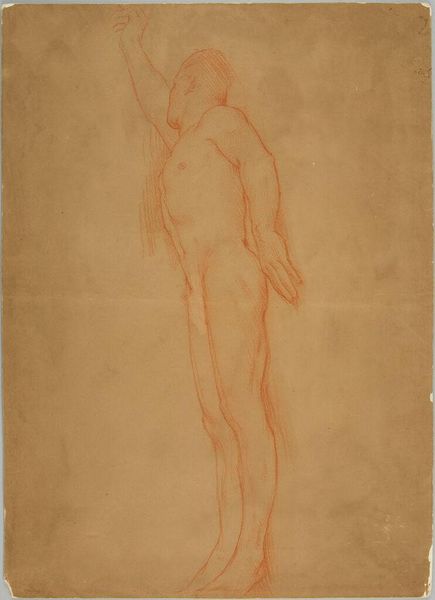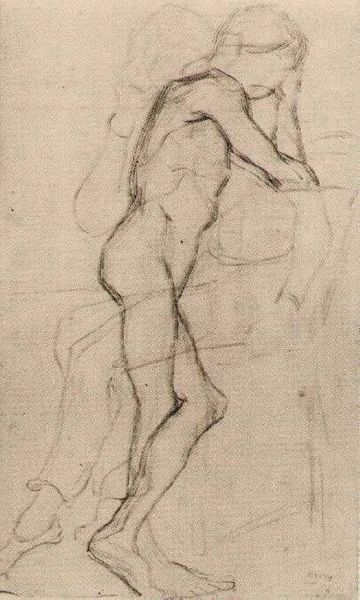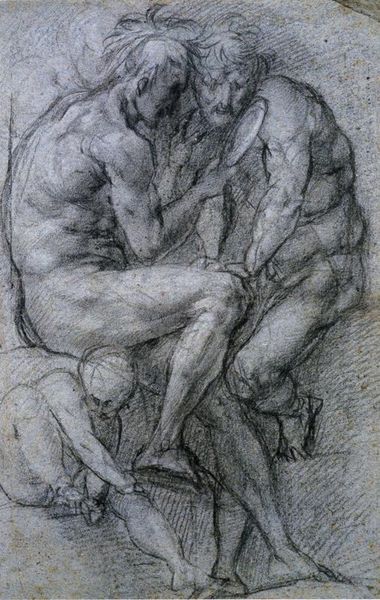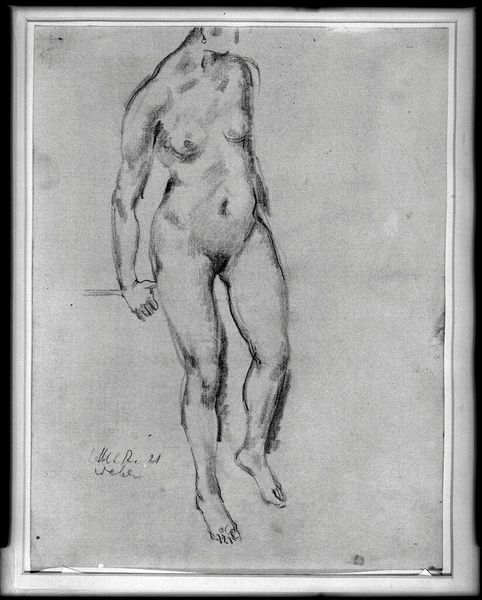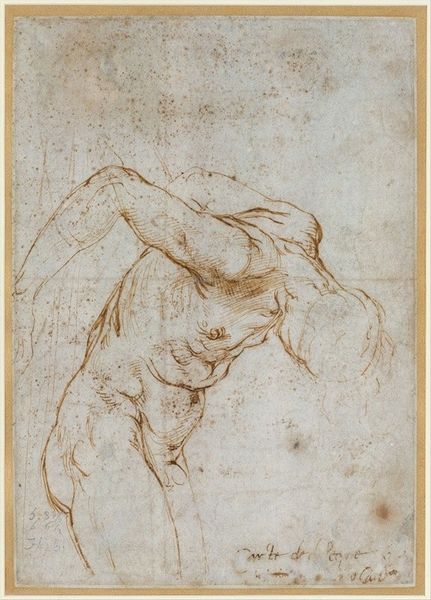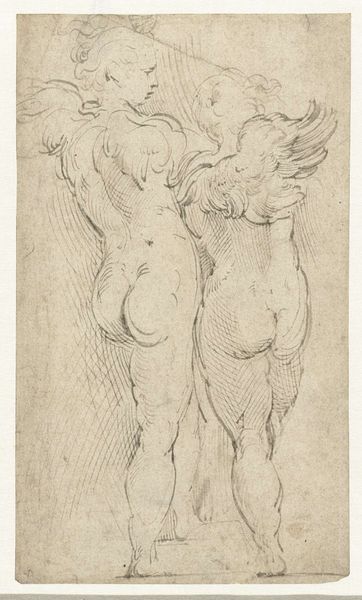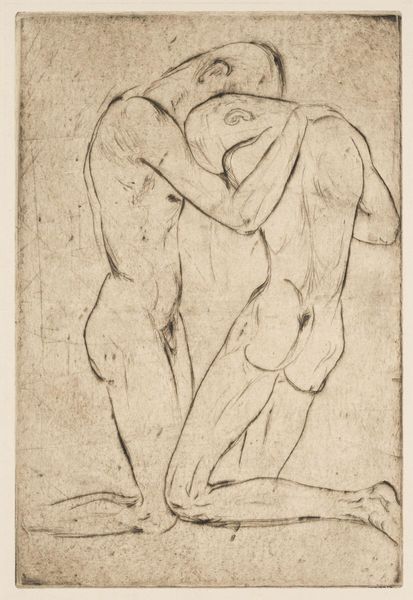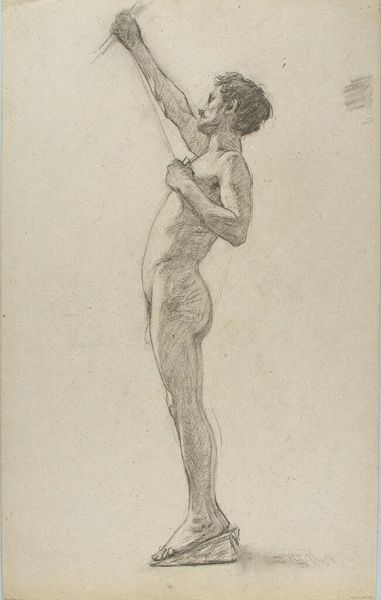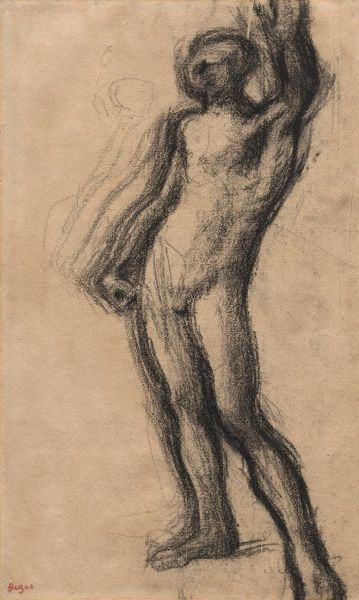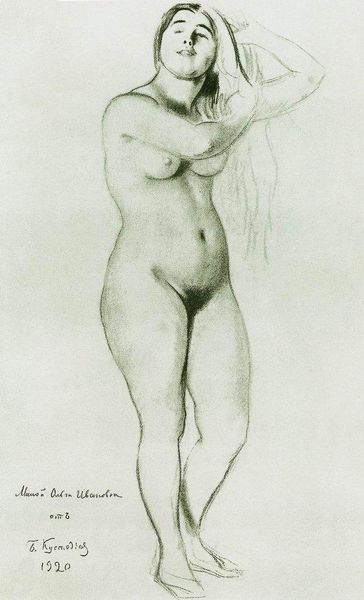
drawing, charcoal
#
drawing
#
charcoal drawing
#
mannerism
#
figuration
#
11_renaissance
#
charcoal art
#
charcoal
#
history-painting
#
charcoal
#
nude
Dimensions: 41 x 25.9 cm
Copyright: Public domain
Editor: We're looking at "Two Nudes," a charcoal drawing created around 1525 by Jacopo Pontormo, currently residing in the Uffizi Gallery. The figures feel dynamic, almost caught mid-motion. I'm curious, what do you see as the most compelling formal aspects of this piece? Curator: The immediate aspect which strikes the eye is Pontormo’s manipulation of line. Notice how the sinuous contour emphasizes the torsion within the figures' forms. This is further accentuated through Pontormo's strategic implementation of *chiaroscuro*; stark contrasts that highlight specific muscle groups to produce an intensified emotional resonance. The dynamism which you sensed is largely achieved through these very contrasts, particularly around areas where light catches bone and sinew, furthering accentuating dramatic poses typical of the Mannerist style. Editor: It’s interesting you point out the contrast because initially, the blended charcoal made me think of softness. So, the light and dark do fight for dominance in this image. What would you say is the effect of using charcoal versus, say, ink in achieving this look? Curator: Indeed, it is this interplay which animates the composition. Charcoal permits a flexibility in tonal gradation unattainable with ink. The artist here has employed it masterfully to imply volume without necessitating meticulous detail, leaving regions suggestive and open to interpretation. It also mirrors a classical artistic thought: That *disegno*, drawing and design, are supreme indicators of artistic brilliance. The lack of colour, therefore, removes superfluous distractions. Editor: So, by using the medium of charcoal in such a deliberate way, Pontormo almost directs our gaze, making us fill in the blanks ourselves. Curator: Precisely. The strategic obscurity encourages an active participation from the viewer. Pontormo doesn't offer answers so much as visual suggestions. A formal tactic typical to art being made at the time. Editor: I see. Thanks, exploring Pontormo's use of charcoal through this lens really illuminates the thought and complexity behind this work. Curator: Indeed. Considering the *disegno*, allows for further inquiry into the art’s overall intent, as well as an aesthetic experience which transcends time.
Comments
No comments
Be the first to comment and join the conversation on the ultimate creative platform.
